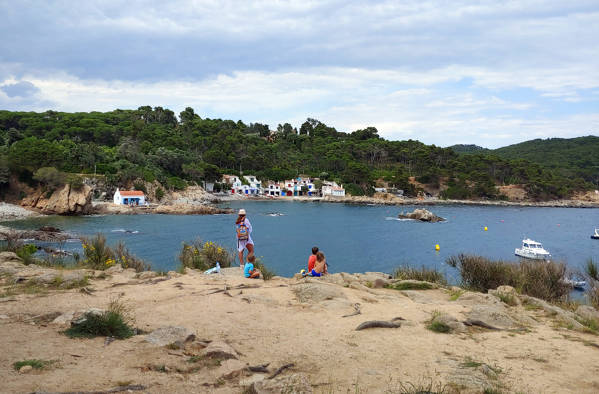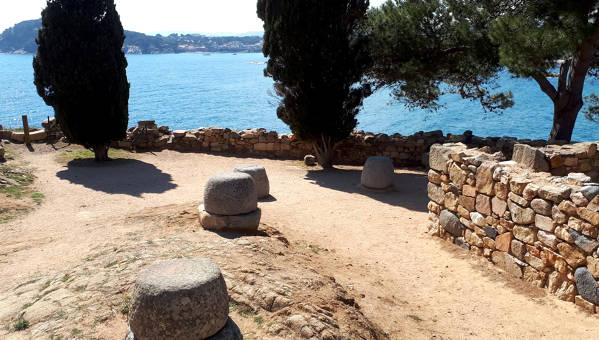Iberian Village of Castell
In a strategic location, between the Castell beach in Palamós and the cove of Sa Corbetera, we find a small peninsula that in the 6th century BC gave rise to the construction of a settlement by the Iberian people of the Indigets. The Iberian village of Castell has been considered a Cultural Asset of National Interest since 1996.
The area was inhabited until the 1st century BC, experiencing various splendour stages and urban expansion. Its privileged location on the seashore and the steep terrain of the site made it possible for the Iberian settlement of Castell to become a prosperous and easily defensible nucleus, which was commercially linked to the Greek city of Empúries and survived Romanisation.
Today, the Iberian settlement of Castell is an important site on the Girona coast. The village's remains are in a good state of preservation, allowing us to observe different urban elements such as streets, rooms, grain storage silos, water cisterns and the walls that protected the settlement. The different archaeological interventions that have been carried out have allowed us to interpret the functioning of this population centre, giving rise to the discovery of ceramic remains from Campania, grey Emporitan pottery and a small sheet of lead with an Iberian inscription, dating from the 3rd century BC.
Visit Palamós
The reference fishing centre

Palamós is moved by its port, an important centre of comercial, tourist and fishing activity. There are a lot of interesting activities for the visitors, like the fish auction, the visit to the Fishing Museum or the possibility to become a fisherman for a day with Pescaturisme.
A part of the fishing activity, Palamós also gives a big offer for the visitors, like wine industry routes, sports and hiking journeys, or visiting beautiful nature, like S'Alguer cove, declared Cultural Asset of National Interest.
